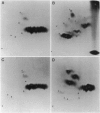Abstract
Reef-building corals and other tropical anthozoans harbor endosymbiotic dinoflagellates. It is now recognized that the dinoflagellates are fundamental to the biology of their hosts, and their carbon and nitrogen metabolisms are linked in important ways. Unlike free living species, growth of symbiotic dinoflagellates is unbalanced and a substantial fraction of the carbon fixed daily by symbiont photosynthesis is released and used by the host for respiration and growth. Release of fixed carbon as low molecular weight compounds by freshly isolated symbiotic dinoflagellates is evoked by a factor (i.e., a chemical agent) present in a homogenate of host tissue. We have identified this "host factor" in the Hawaiian coral Pocillopora damicornis as a set of free amino acids. Synthetic amino acid mixtures, based on the measured free amino acid pools of P. damicornis tissues, not only elicit the selective release of 14C-labeled photosynthetic products from isolated symbiotic dinoflagellates but also enhance total 14CO2 fixation.
Full text
PDF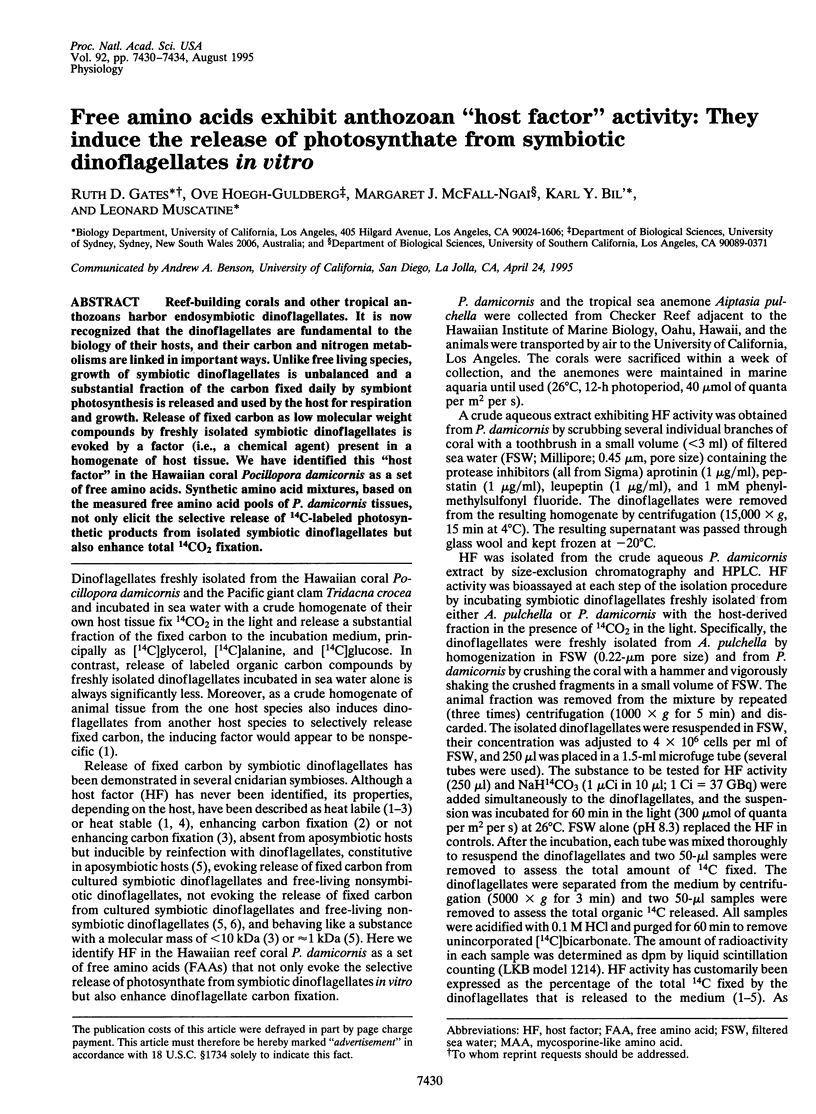
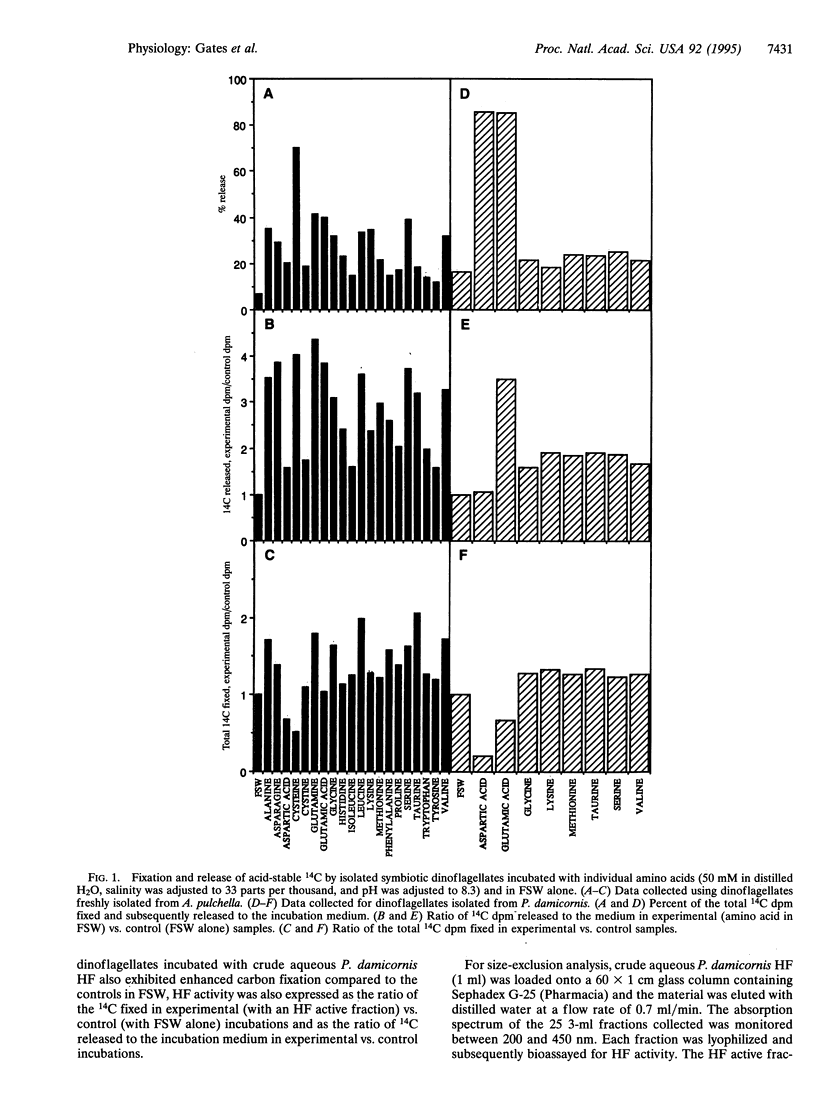
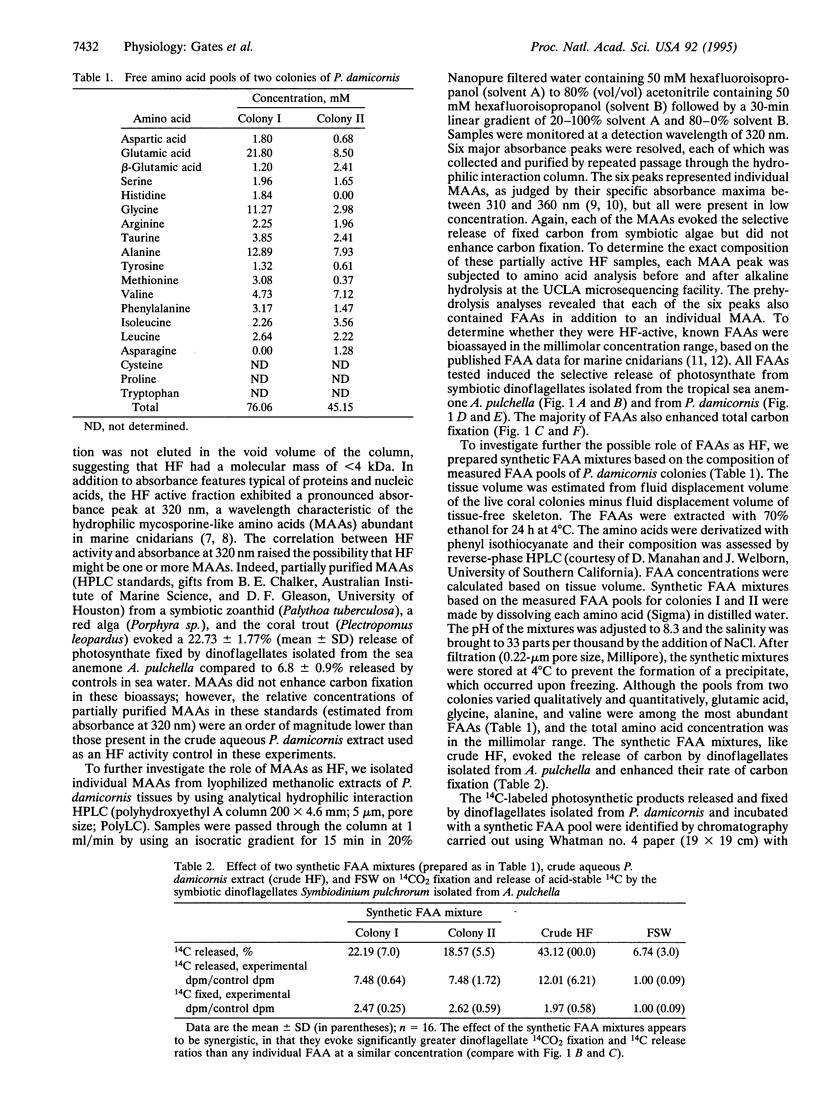
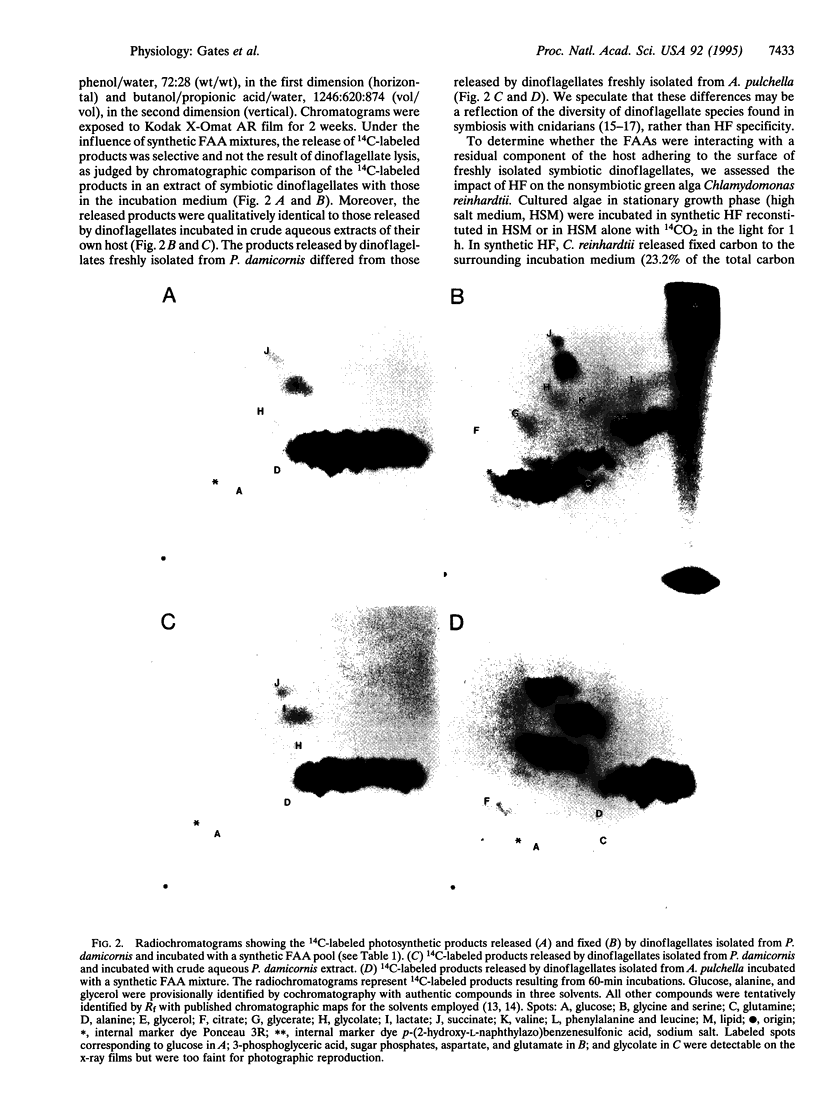
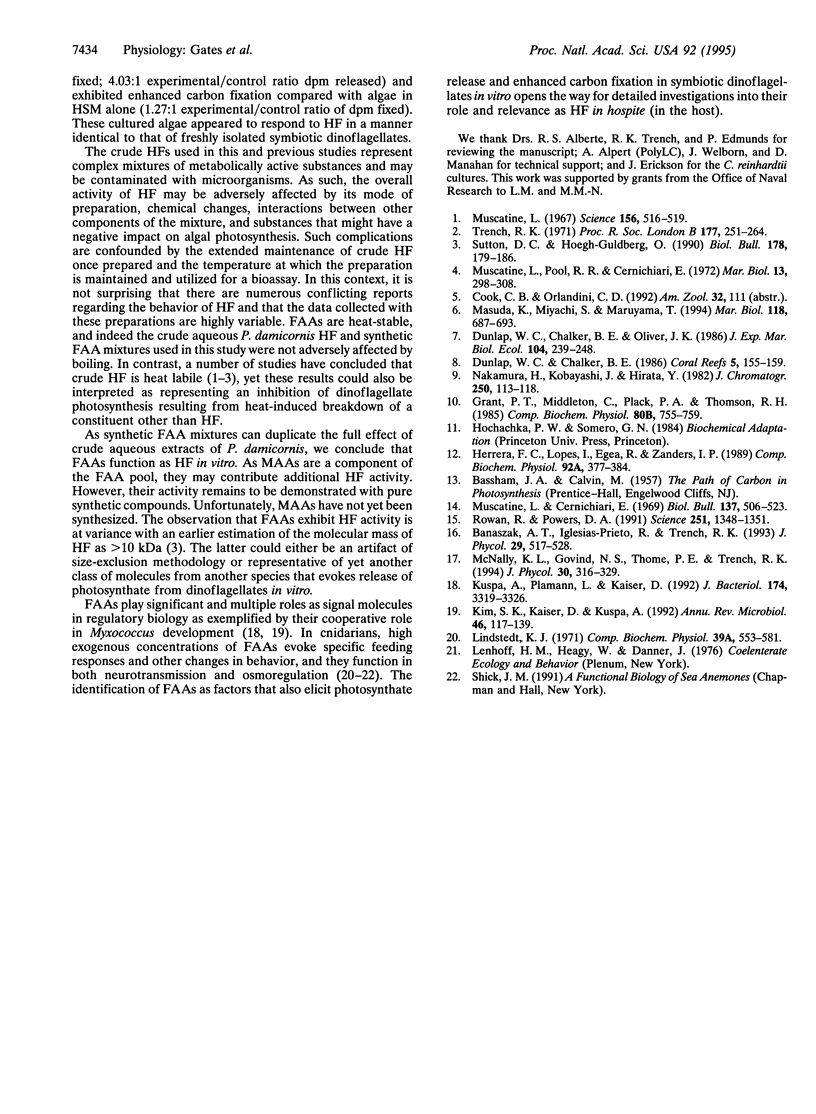
Images in this article
Selected References
These references are in PubMed. This may not be the complete list of references from this article.
- Kim S. K., Kaiser D., Kuspa A. Control of cell density and pattern by intercellular signaling in Myxococcus development. Annu Rev Microbiol. 1992;46:117–139. doi: 10.1146/annurev.mi.46.100192.001001. [DOI] [PubMed] [Google Scholar]
- Kuspa A., Plamann L., Kaiser D. Identification of heat-stable A-factor from Myxococcus xanthus. J Bacteriol. 1992 May;174(10):3319–3326. doi: 10.1128/jb.174.10.3319-3326.1992. [DOI] [PMC free article] [PubMed] [Google Scholar]
- Muscatine L. Glycerol excretion by symbiotic algae from corals and tridacna and its control by the host. Science. 1967 Apr 28;156(3774):516–519. doi: 10.1126/science.156.3774.516. [DOI] [PubMed] [Google Scholar]
- Rowan R., Powers D. A. A molecular genetic classification of zooxanthellae and the evolution of animal-algal symbioses. Science. 1991 Mar 15;251(4999):1348–1351. doi: 10.1126/science.251.4999.1348. [DOI] [PubMed] [Google Scholar]



